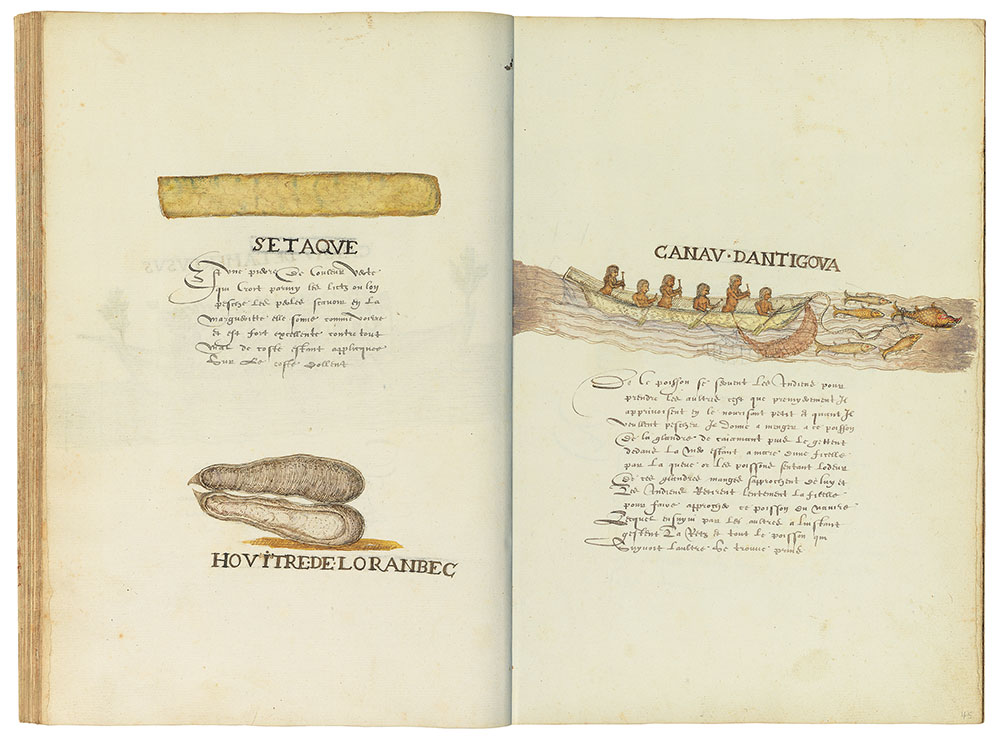
Histoire Naturelle des Indes
Illustrated manuscript
Bequest of Clara S. Peck, 1983
In 1983, The Morgan Library & Museum received, as the bequest of Clara S. Peck, an extraordinary volume whose beautiful paintings and descriptions document the plant, animal, and human life of the Caribbean late in the sixteenth century. Spaniards had already begun to exert influence over the indigenous people of the area when explorers from England and France arrived, among them Sir Francis Drake. The volume, known as the Drake Manuscript and titled Histoire Naturelle des Indes when it was bound in the eighteenth century, gives us a wonderful picture of daily life at the time of Drake's many visits to the region. Although Drake's connection to the manuscript is uncertain, he is mentioned on more than one occasion by the authors. Drake himself is known to have painted, but none of his work survives.
Contents: 199 images of West Indian plants, animals and human life, with accompanying manuscript captions written in late sixteenth-century French.
Medium: Most of the illustrations consist of a black chalk underdrawing and a combination of pen and brown ink with watercolor; on some images selected areas have also been glazed with a gum.
Binding: Bound or rebound in brown leather in the late 18th century.
Pagination: Penciled folio numbers (1–125) in lower right corner of each page were added by The Morgan Library & Museum. Folios 92v–93, 93v–94, and 95v–96 are fold-out leaves.
Setaqve
This is a green-colored stone which is found among the sea beds where they fish for pearls, that is at La Margarita. It gives off a sound like glass and is very excellent for all pain of the flanks, being laid on the painful side.
Hovitre De Loranbec (Oyster from Loranbec)
Canav Dantigova (Canoe of Antigua)
The Indians use this fish to catch others. They first tame it by feeding it when it is small and when they want to fish, they feed this fish on the gland of a cayman then throw it in the sea having tied a string to its tail. When the fish smell the odor of the glands it has eaten, they come close to it and the Indians slowly pull the string to bring the fish near the boat; the fish is followed by others and, at this instant, they throw out the net and all the fish which followed the other fish are caught.
